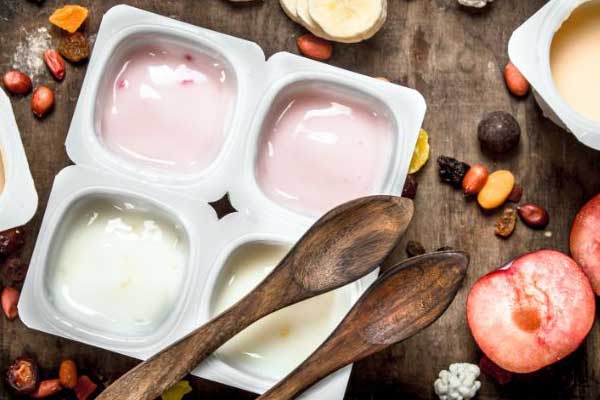
(Image source from: Canva.com)
Yogurt has long been known as a healthy staple, rich in probiotics, calcium and protein. But before you start eating it guilt-free, you should ask yourself, “Is it really as healthy as it claims?” Yogurt is often overlooked due to marketing and its connection to nutrition, health, and gut health. It is promoted as a convenient and nutritious snack that fits any part of the day, from breakfast to dessert. But can this health cycle be studied? Many people think that all yogurts are healthy, but the truth is that not all yogurts are created equal. The colorful fruit yogurts on supermarket shelves may be more of a dessert than the healthy snack you think of them as. Yogurt and quark differ in terms of bacterial strain, fat content and consistency. Yogurt is prepared with special bacteria such as Mycobacterium bulgaricus, which have a positive effect on intestinal health. It is often made with low-fat or fat-free milk, which gives it a thicker, creamier consistency. Quark, on the other hand, is traditionally made from whole milk using natural lactic acid bacteria, which results in a thinner consistency and a higher fat content.
Quark contains calcium, protein and vitamins such as B12. Provides probiotics that improve bone health and support muscle repair and growth. Quark supports nerve function, promotes intestinal health and aids digestion. In fact, the properties of yogurt are very similar. Therefore, choosing between yogurt and quark can be a difficult decision. Yogurt may seem like a healthy option, but one of the biggest problems is the hidden sugar. The "low-fat vanilla yogurt" you think is a smart choice may contain as much sugar as a small cup of ice cream or more. Brands often add sugar to low-fat yogurt to boost its flavor, turning a seemingly healthy snack into a sweet craving that can spike your blood sugar levels. We compared Epigamia blueberry yogurt (85g) and Amul strawberry ice cream (100g) to find out which is healthier. Ice cream had more volume than yogurt (78 kcal) and more calories (219 kcal). Yogurt had more protein (5.2 grams vs. 3.7 grams), but ice cream had more sugar (16 grams vs. 11 grams) and a much higher fat content (13 grams vs. 1.6 grams). Although both products contain calcium, ice cream contained slightly more calcium (170 mg) than yogurt (143 mg).
Flavored yogurt is healthy because it is low in fat and high in protein. However, keep in mind that the added sugar (7 grams) makes it a sweet treat. Flavored yogurt can have as many calories as ice cream, especially if it has added sugar, advises nutritionist Sharma. Choosing an unsweetened and low-fat yogurt is a smart and healthy choice over other brands. The results were quite surprising. As children, many of us ate ghar ka dahi prepared and fermented at home. Of course, you may be wondering why you should use traditional homemade curds instead of yogurt. Although it sounds like a good idea, there are some important factors to consider. The fat content in quark and yogurt depends on the type of milk: high-fat or low-fat milk. When preparing it, it is healthier to choose low-fat milk.
Cottage cheese and yogurt contain probiotics, which help keep your gut healthy, but also various strains of bacteria. Yogurt usually contains Bulgaricus bacteria, which aid digestion and support the immune system. Curd contains natural lactic acid bacteria that have anti-inflammatory properties and are mildly effective in resolving digestive problems. Both have a positive effect on intestinal health, but their effect varies depending on individual tolerance and specific bacterial strains. Both cottage cheese and yogurt provide important nutrients such as calcium and probiotics, but their composition is slightly different. Quark has a higher calcium content (around 400 mg/100 g) compared to yogurt, which usually contains 200 to 300 mg/100 g. Natural yogurt and unsweetened yogurt, preferably choose Greek yogurt, which is high in protein and low in sugar. Look for “live cultures” on the label to ensure you’re getting beneficial probiotics.
Beware of low-fat yogurts, which usually have added sugar to compensate for the loss of flavor. If you look for yogurts with colorful packaging, added flavors, or ingredients like granola or fruit, you may end up with something that isn't healthy. Reinforce as expected. In such cases, you may want to use low-fat ice cream instead.







